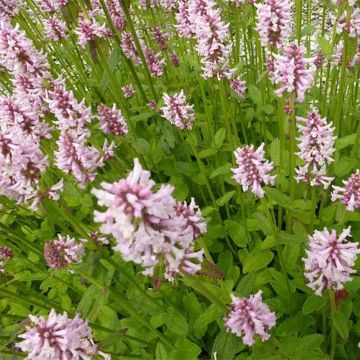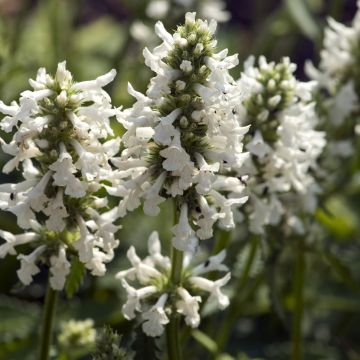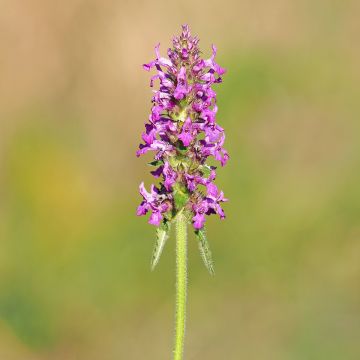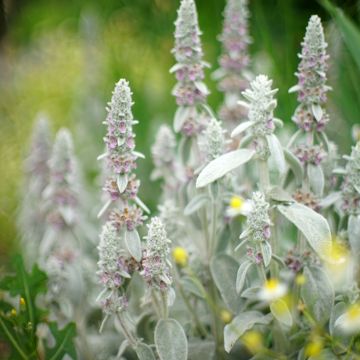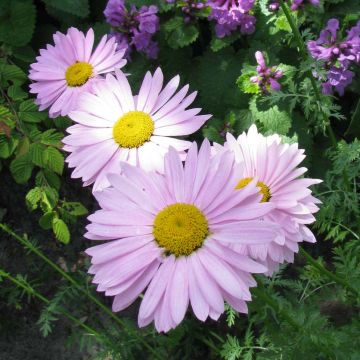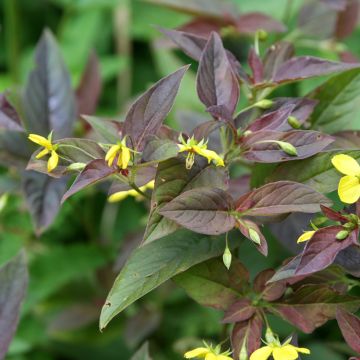

Stachys palustris
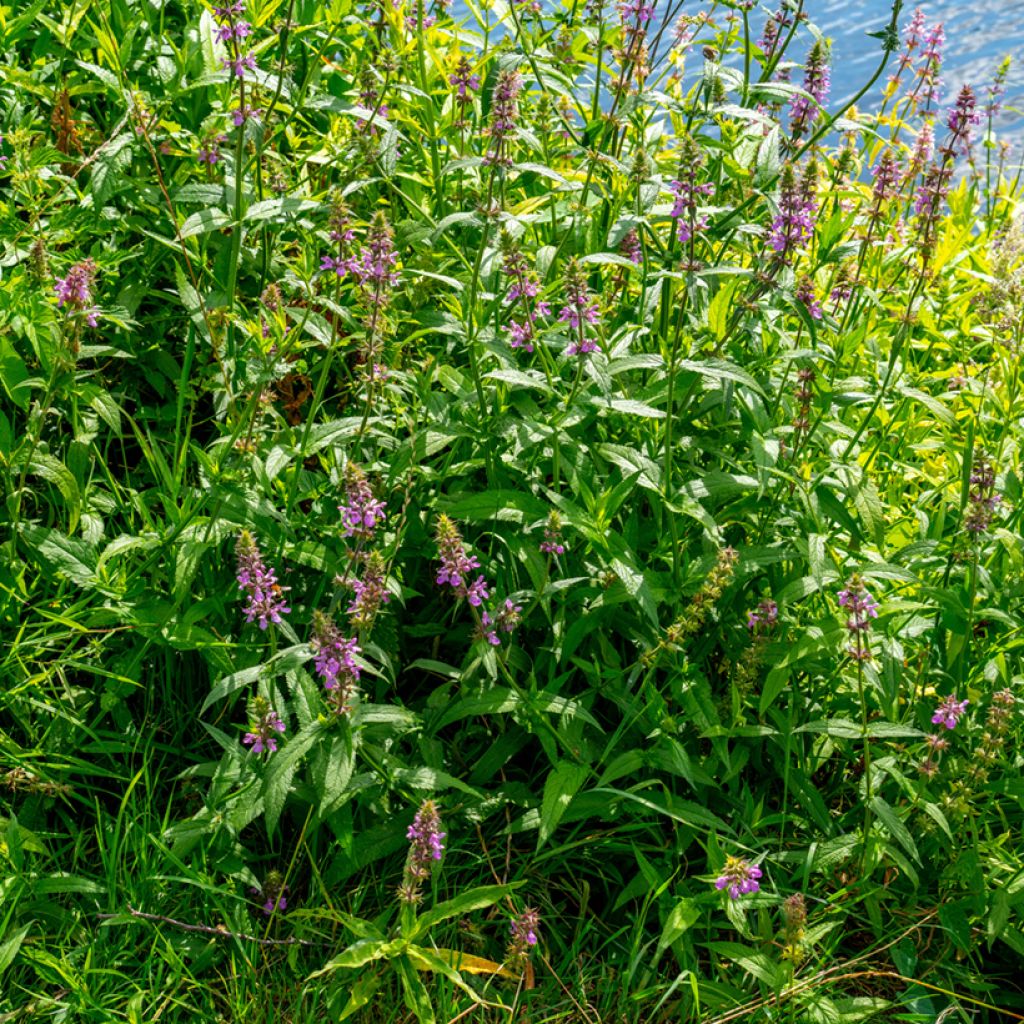

Stachys palustris


Stachys palustris


Stachys palustris


Stachys palustris


Stachys palustris


Stachys palustris
Stachys palustris
Stachys palustris
Marsh Woundwort, Marsh Hedge Nettle
The marsh cudweed has invited itself and settled in a pot on the terrace of my Parisian apartment for several years; I have admired the spikes carrying multiple pyramid-shaped buds, before developing as many delicate flowers resembling mini orchids. I have tasted the leaves in salad, (a bit rough, but) the taste is not unpleasant. However, these plants develop numerous bulbous roots and become very invasive and difficult to eliminate!
Marie, 20/10/2021
This item cannot be shipped to the selected country
Delivery charge from €5.90
More information
Schedule delivery date,
and select date in basket
This plant carries a 12 months recovery warranty
More information
We guarantee the quality of our plants for a full growing cycle, and will replace at our expense any plant that fails to recover under normal climatic and planting conditions.
From €5.90 for pickup delivery and €6.90 for home delivery
Express home delivery from €8.90.
Does this plant fit my garden?
Set up your Plantfit profile →
Description
The marsh woundwort, in Latin Stachys palustris, is a native perennial of wetlands that is decorative, perfectly adapted to our climates, and useful for balancing ponds. It forms a beautiful clump of leafy stems, with a long creeping crown that works to purify and stabilize the banks, while its upright spikes of pink flowers feed pollinating insects and delight the gardener throughout the summer. All these qualities make this beautiful woundwort a plant to prioritize for pond landscaping.
The marsh woundwort is an edible and medicinal herbaceous plant native to Europe and temperate Asia, which can be found in wet meadows and marshes. It is a very hardy plant, preferring marshy and clayey soil and sunny exposures. It is a deciduous species, with above-ground vegetation emerging from the ground in spring and disappearing in winter. It is worth noting that the drier the soil, the less vigorous the growth and the smaller and hairier the leaves. This species is listed on the IUCN Red List (endangered plants), and it is protected in the south of France, in the Provence-Alpes-Côte d'Azur region.
Stachys palustris forms clumps averaging 75cm (30in) in height (sometimes over 1m (3ft) when flowering), resembling nettles. The plant spreads through its rhizomes and colonizes the soil. This root system naturally filters water, absorbing nutrients such as nitrates from the decomposition of organic matter. It grows upright, slightly hairy, square-sectioned stems, bearing leaves whose appearance can vary depending on the growing conditions. They are dark green, lanceolate and wavy, with a pointed tip and toothed edges. All parts of the plant emit an odour when crushed, which may be unpleasant. However, their nutty flavour is pleasant. The flowering period extends from June to September. The small two-lipped flowers, measuring 1.2 to 15cm (1 to 6in) long, are grouped in small clusters at the top of the stems, some appearing in the axils of lower leaves on the stem. They are pink-mauve with white spots. This nectar-rich flowering attracts many pollinating insects. The foliage, roots, and seeds are edible and renowned for their nutritional qualities.
A highly ornamental and easy-to-grow marsh plant, the marsh woundwort will naturally find a place near water, on humid and sunny banks. The purple loosestrife, the flowering rush Butomus umbellatus, the double marsh marigold Caltha palustris Plena, and the ribbon grass Phalaris arundinacea 'Côte de nacre' are other vigorous bank plants that can accompany it in sunny, moist to flooded areas.
Report an error about the product description
Stachys palustris in pictures
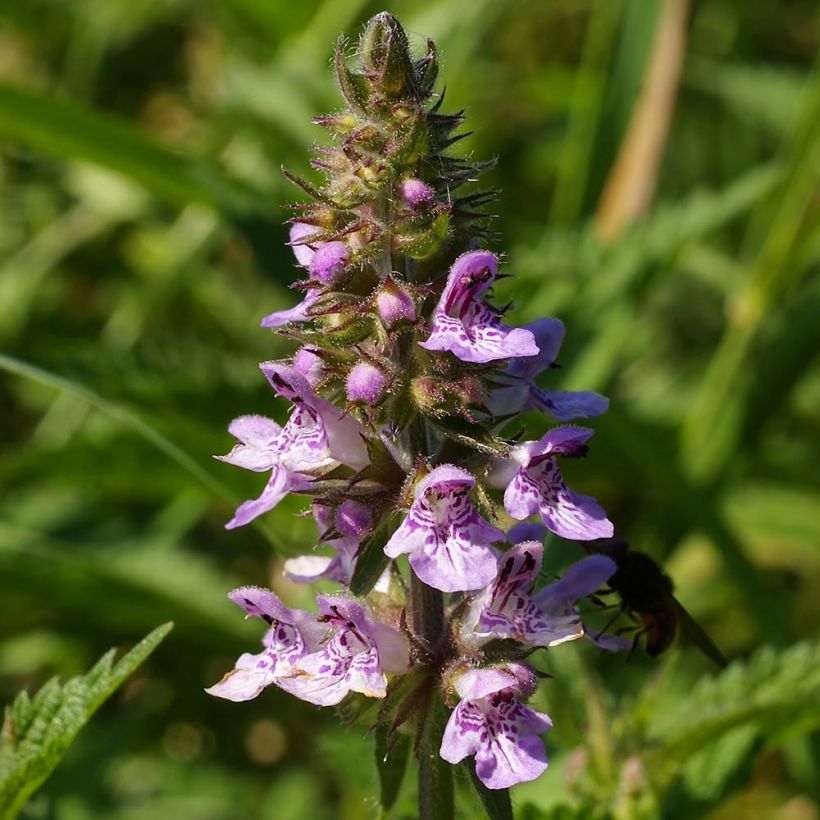

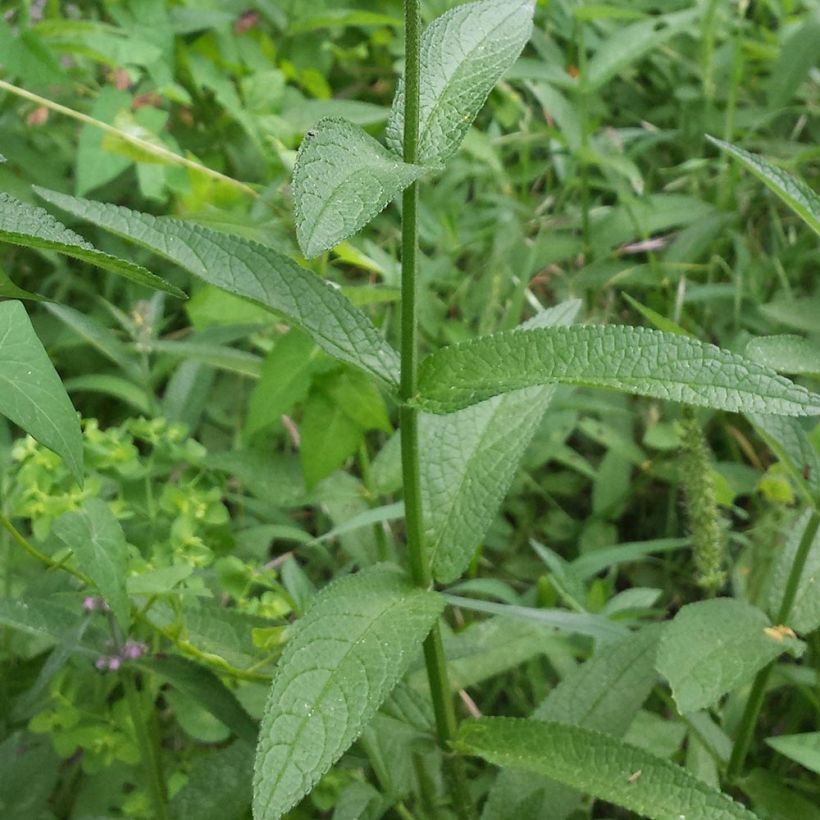



Flowering
Foliage
Plant habit
Botanical data
Stachys
palustris
Lamiaceae
Marsh Woundwort, Marsh Hedge Nettle
Western Europe
Other Stachys
Planting and care
Stachys palustris is easy to grow in the sun, in any moist, marshy or consistently wet soil, even in summer. It is a hardy and undemanding perennial, which does not need fertilizer (on the contrary, excessive fertilizers pollute water sources). Its rootstock rarely becomes invasive, with new shoots instead increasing the density of the plant. It reproduces spontaneously and naturalizes through its numerous seeds, and is very easy to propagate by dividing the rootstock in spring using a spade, and replant the piece in another location. Prune the plant after flowering if you prefer to prevent it from self-seeding. This marsh woundwort is not susceptible to diseases or attacks from parasites.
Planting period
Intended location
Care
-
, onOrder confirmed
Reply from on Promesse de fleurs
Summer flowering perennials
Haven't found what you were looking for?
Hardiness is the lowest winter temperature a plant can endure without suffering serious damage or even dying. However, hardiness is affected by location (a sheltered area, such as a patio), protection (winter cover) and soil type (hardiness is improved by well-drained soil).

Photo Sharing Terms & Conditions
In order to encourage gardeners to interact and share their experiences, Promesse de fleurs offers various media enabling content to be uploaded onto its Site - in particular via the ‘Photo sharing’ module.
The User agrees to refrain from:
- Posting any content that is illegal, prejudicial, insulting, racist, inciteful to hatred, revisionist, contrary to public decency, that infringes on privacy or on the privacy rights of third parties, in particular the publicity rights of persons and goods, intellectual property rights, or the right to privacy.
- Submitting content on behalf of a third party;
- Impersonate the identity of a third party and/or publish any personal information about a third party;
In general, the User undertakes to refrain from any unethical behaviour.
All Content (in particular text, comments, files, images, photos, videos, creative works, etc.), which may be subject to property or intellectual property rights, image or other private rights, shall remain the property of the User, subject to the limited rights granted by the terms of the licence granted by Promesse de fleurs as stated below. Users are at liberty to publish or not to publish such Content on the Site, notably via the ‘Photo Sharing’ facility, and accept that this Content shall be made public and freely accessible, notably on the Internet.
Users further acknowledge, undertake to have ,and guarantee that they hold all necessary rights and permissions to publish such material on the Site, in particular with regard to the legislation in force pertaining to any privacy, property, intellectual property, image, or contractual rights, or rights of any other nature. By publishing such Content on the Site, Users acknowledge accepting full liability as publishers of the Content within the meaning of the law, and grant Promesse de fleurs, free of charge, an inclusive, worldwide licence for the said Content for the entire duration of its publication, including all reproduction, representation, up/downloading, displaying, performing, transmission, and storage rights.
Users also grant permission for their name to be linked to the Content and accept that this link may not always be made available.
By engaging in posting material, Users consent to their Content becoming automatically accessible on the Internet, in particular on other sites and/or blogs and/or web pages of the Promesse de fleurs site, including in particular social pages and the Promesse de fleurs catalogue.
Users may secure the removal of entrusted content free of charge by issuing a simple request via our contact form.
The flowering period indicated on our website applies to countries and regions located in USDA zone 8 (France, the United Kingdom, Ireland, the Netherlands, etc.)
It will vary according to where you live:
- In zones 9 to 10 (Italy, Spain, Greece, etc.), flowering will occur about 2 to 4 weeks earlier.
- In zones 6 to 7 (Germany, Poland, Slovenia, and lower mountainous regions), flowering will be delayed by 2 to 3 weeks.
- In zone 5 (Central Europe, Scandinavia), blooming will be delayed by 3 to 5 weeks.
In temperate climates, pruning of spring-flowering shrubs (forsythia, spireas, etc.) should be done just after flowering.
Pruning of summer-flowering shrubs (Indian Lilac, Perovskia, etc.) can be done in winter or spring.
In cold regions as well as with frost-sensitive plants, avoid pruning too early when severe frosts may still occur.
The planting period indicated on our website applies to countries and regions located in USDA zone 8 (France, United Kingdom, Ireland, Netherlands).
It will vary according to where you live:
- In Mediterranean zones (Marseille, Madrid, Milan, etc.), autumn and winter are the best planting periods.
- In continental zones (Strasbourg, Munich, Vienna, etc.), delay planting by 2 to 3 weeks in spring and bring it forward by 2 to 4 weeks in autumn.
- In mountainous regions (the Alps, Pyrenees, Carpathians, etc.), it is best to plant in late spring (May-June) or late summer (August-September).
The harvesting period indicated on our website applies to countries and regions in USDA zone 8 (France, England, Ireland, the Netherlands).
In colder areas (Scandinavia, Poland, Austria...) fruit and vegetable harvests are likely to be delayed by 3-4 weeks.
In warmer areas (Italy, Spain, Greece, etc.), harvesting will probably take place earlier, depending on weather conditions.
The sowing periods indicated on our website apply to countries and regions within USDA Zone 8 (France, UK, Ireland, Netherlands).
In colder areas (Scandinavia, Poland, Austria...), delay any outdoor sowing by 3-4 weeks, or sow under glass.
In warmer climes (Italy, Spain, Greece, etc.), bring outdoor sowing forward by a few weeks.


































